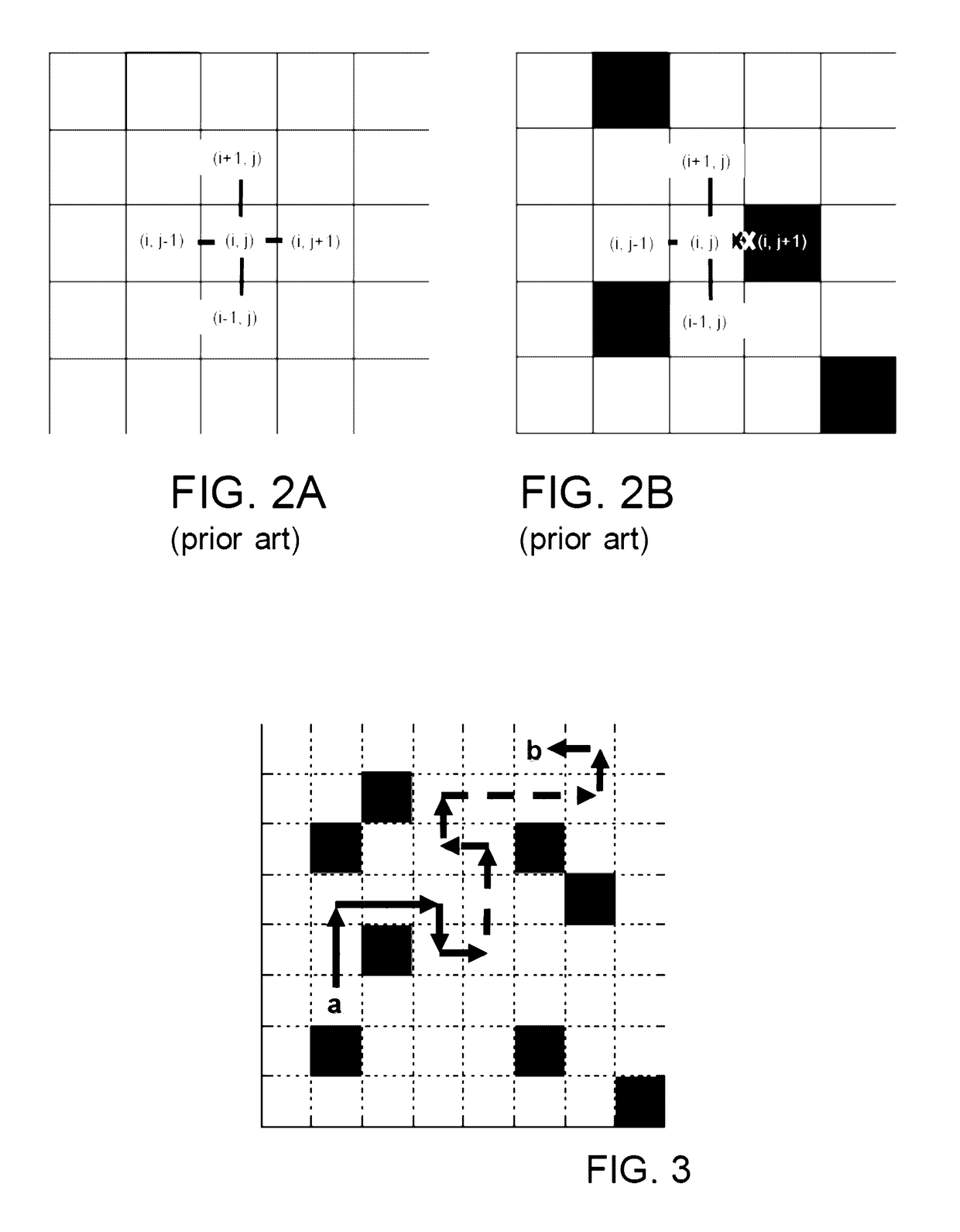Fiber tractography using entropy spectrum pathways
a fiber tractography and entropy spectrum technology, applied in the field of connectivity characterization within complex data, can solve the problems of inherently ill-posed problems, difficult to interpret quantitatively, indirect traceography measurements, etc., and achieve the effect of enhancing the esp method and achieving complete and accurate path information more efficiently
- Summary
- Abstract
- Description
- Claims
- Application Information
AI Technical Summary
Benefits of technology
Problems solved by technology
Method used
Image
Examples
example 1
Tractography Guided by ESP
[0133]A critical simplification that is made in all current methods used to estimate either the intravoxel diffusion characteristics (via the EAP, for example) or to estimate the underlying global structure (tractography) is the assumption that these two estimation procedures are independent. Thus, one first estimates the intravoxel diffusion, then applies a tractography algorithms. For example multiple b-shell effects, used in obtaining the EAP, are used only to infer directional multiple fiber information for input into streamline tractography algorithms. However, this distinction between local and global estimation is artificial and limiting, since both the local (voxel EAP) information and the global structure (tracts) are from the same tissue, just seen at different scales.
[0134]The problem of local diffusion estimation and fiber tractography is revisited with the specific goal to include multiple spatial and temporal scales that can be deduced from mu...
example 2
Tractography Guided by ESP—Evaluation
[0173]To evaluate practical aspects and performance of ESP-guided fiber tractography, we conducted several simulations of multiple shell multiple angle diffusion weighted MRI datasets acquired using either realistic MR phantom or real brain samples.
[0174]The first dataset is of the well-known “fiber cup” MR phantom extensively used for testing and performance evaluation of various fiber tractography approaches. The phantom consists of seven fiber bundles confined in a single plane by squeezing them in between two solid disks. Diffusion-weighted image data of the phantom was acquired on the 3T Tim Trio MRI system with 3 mm isotropic resolution on 64×64×3 spatial grid. Three diffusion sensitizations (at b-values b=650 / 1500 / 2000 s / mm2) were collected two times for 64 different diffusion gradients uniformly distributed over a unit sphere. Several baseline (b=0) images were also recorded.
[0175]Our initial stage of processing includes restoration of th...
PUM
 Login to View More
Login to View More Abstract
Description
Claims
Application Information
 Login to View More
Login to View More - R&D
- Intellectual Property
- Life Sciences
- Materials
- Tech Scout
- Unparalleled Data Quality
- Higher Quality Content
- 60% Fewer Hallucinations
Browse by: Latest US Patents, China's latest patents, Technical Efficacy Thesaurus, Application Domain, Technology Topic, Popular Technical Reports.
© 2025 PatSnap. All rights reserved.Legal|Privacy policy|Modern Slavery Act Transparency Statement|Sitemap|About US| Contact US: help@patsnap.com



